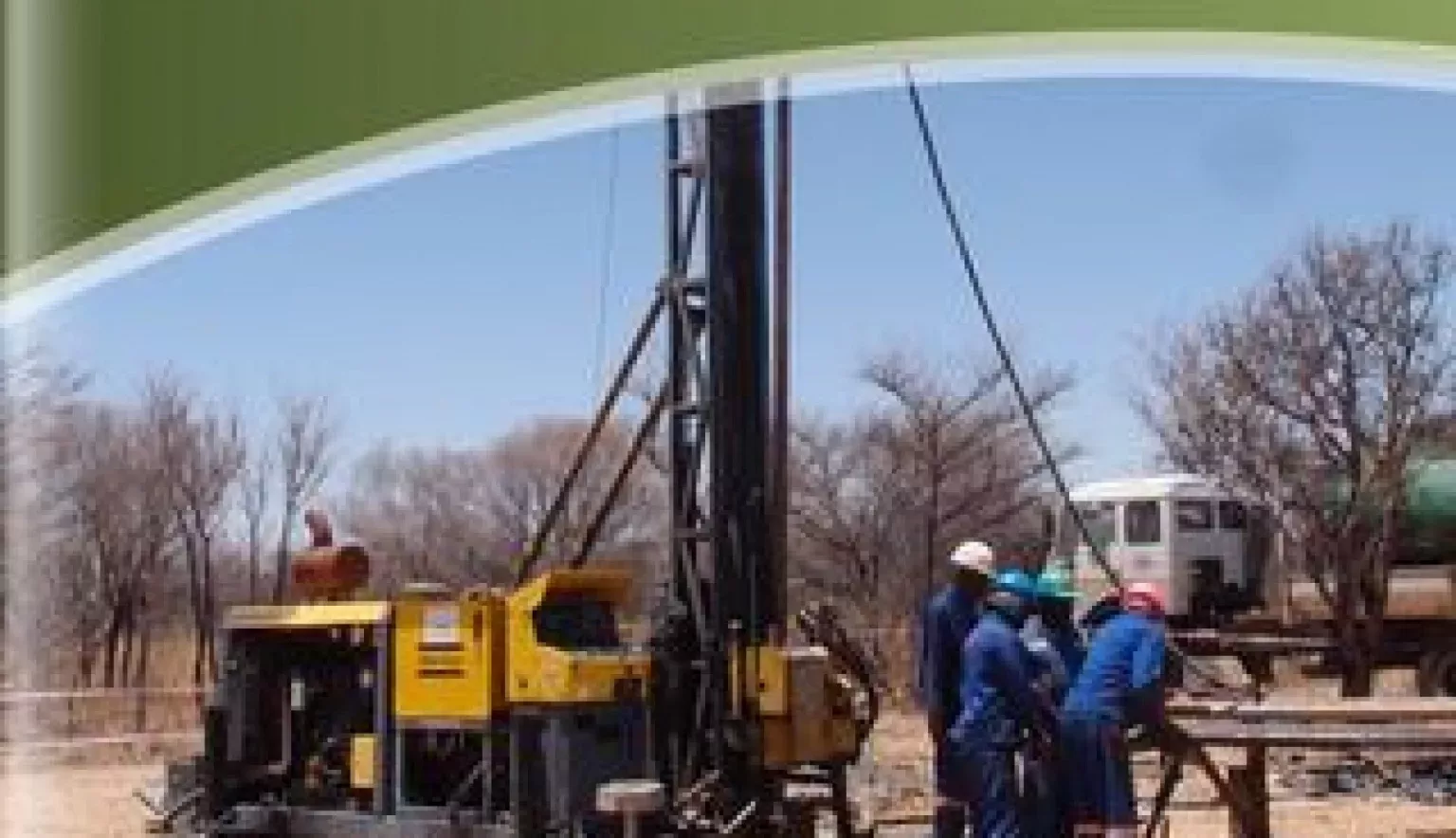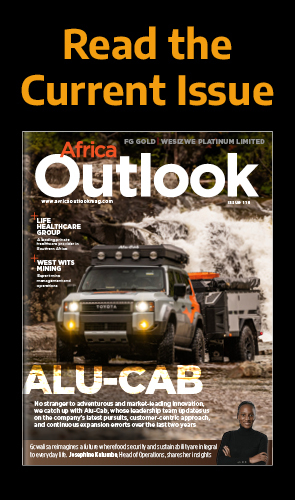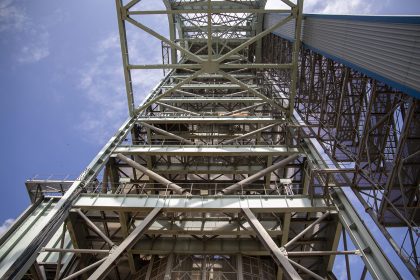Addressing a pressing need in Southern Africa at present, the entrepreneurial flair of African Energy Resources and its partner network is generating a long-term legacy on the continent.
DELIVERING POWER TO THE PEOPLE
African Energy Resources is catering for a very real need in Southern Africa at present as it looks to bring power to the people and sustainability to the region.
Starting life as a private Company in 2005, an initial foray into the uranium sector built the Company’s positive reputation for efficiency and sustainability; and following success in this arena across Zambia and Botswana, the business was encouraged to flex its entrepreneurial muscle in order to capitalise on an even broader opportunity in the form of coal and coal-to-power.
“There were two things that drove this shift,” Managing Director, Frazer Tabeart says. “Firstly, after the global financial crisis and the 2011 Fukushima tidal wave, the uranium industry stagnated. At about the same time, on our uranium project in Botswana, we made a major discovery of coal, at a time when the coal market was really starting to expand.
“So we shifted our focus from uranium in Zambia to coal in Botswana in 2011, and since then we’ve focused on developing a number of coal projects in Botswana.”
Kick-starting this new era for African Energy Resources was the Sese coal project in Botswana where the Company initially focused its attentions on evaluating the potential of coal export to the global market.
However, once again in response to industry trends and the recent decline of the global seaborne coal trade, the Company has strived to diversify once again; consequently migrating into the optimisation of fossil fuel-based power generation to meet market demand in the southern Africa region. Coupled to this, the Company recognised the opportunity to expand its footprint in Botswana through the acquisition of two large coal projects during this downturn.
With regional power shortages evident and highly publicised, the Company is well placed to participate: “Turnkey solutions are important because every country in the region is short of power and they’re all currently trading it between themselves,” Tabeart says. “If one country has a surplus, another country will buy it, but there is a lot of investment that has to go into the power generation side to make it sustainable over the long-term, and whilst a lot of that investment will go into renewables, a lot of it also has to go into other technologies because current generation renewables don’t work all day, every day. So there is a role for large base load projects which do operate on a 24-seven basis, and African Energy Resources is in a very strong position to become a major player in that sector over the next few years.”
A BIG YEAR
In conjunction with its partners, African Energy Resources controls a lot of potential fuel for these power projects and in the case of Sese especially, the combination of the coal quality and geometry means that the end product is highly cost effective per unit of energy; enabling the business to offer a very competitive power sales tariff whilst maintaining an attractive return for equity holders.
To achieve this ultimate Holy Grail though, there is a whole host of considerations at the front end of the process in order to lay down the correct foundations; an ethos which is once again driven by positive collaborations and epitomised by its Sese joint venture alongside majority owner, First Quantum Minerals Ltd.
“There’s a lot of work going on at Sese right now, where we’ve been undertaking a number of technical field programmes to characterise the geotechnical aspects of the potential areas where we may erect the power station; we’re trying to understand the strength of the bedrock to make sure that if we do build a power station, it’s built on an area that can support the weight,” Tabeart explains.
“We’ve also been doing infill drilling in the coal resource, particularly for the first 10 to 15 years of production, because that will give us confidence in the mine schedule, and because we know that potential lenders into the project will also want to have that level of comfort from day one.
“The goal is to bring all of these programmes together early in 2017 so that the project partners are in a position to make a decision on whether the project is going to go ahead to the next stage.”
Complementary projects at Mmamantswe where a plan is in place to sell the project to South African developers as early as 2017 – as well as in Mmamabula West, where a similar timeframe for finding a joint venture partner is in place – further cement the Company’s current influence in the region and coal-to-power sector.
“In regards to the former, the goal is to get all of the feasibility studies complete on that so Mmamantswe is in a position where our partner can start to negotiate an offtake agreement with the Department of Energy in South Africa,” Tabeart details. “With Mmamabula West, we’re trying to establish a partnership with a different South African developer, and the project again will have feasibility studies on it next year and we also hope to get this project to the point where we are in detailed negotiations with the Department of Energy in South Africa in 2017.
“So it’s a big year for us next year and the goal in the ideal world would be to have or be very close to a development decision on the Sese project, and to have a very clear understanding of a finite timeframe for both the other two projects.”
BUILDING RELATIONSHIPS
In recognising the significance that coal could play throughout these projects for Southern Africa, the business has resultantly built up a knowledge base of the electricity market in the region, and who best to partner with in each case; knowing ultimately, that these collaborations are pivotal in finding the optimum commercial solution.
Tabeart continues: “Because of the huge capital investments required in these projects, you’d be naive if you thought you’d take them all the way through on your own. You need a partner that has the technical and financial capacity to assist you, and what we’ve done is developed and maintained our expertise on building our relationships with the Government so that we can leverage our experience there with bringing in partners that have ultimately either the balance sheet or the ability to raise the money needed to build these projects.
“We do much of the early technical work on the projects and then help with the handover to our development partners, effectively becoming an informal part of their team; and then as they build their knowledge of the project and take full control, we put our time and effort into doing the same on the next project. The way our projects are currently positioned is they’re all at slightly different stages of the development spectrum and our input is therefore different in each project.”
POSITIVE IMPACT
Having built up expertise in Botswana and South Africa, as well as a concerted reputation in the coal-to-power industry, the Australian-based enterprise is now seeing the rewards of its long-term value strategy, underpinned by a flexibility that stands the Company in good stead for even more concerted growth in the future.
“It’s not atypical of Australian junior companies to demonstrate this entrepreneurial flair, and with all of us in the Company coming from big company backgrounds, we’ve got the rigour to complement the flexibility and agility to move rapidly but strongly as market trends emerge,” Tabeart emphasises. “We can be quite dynamic in this way and more streamlined across our internal team and therefore our partnerships too.
“We can use their skills and then complement them with our skills meaning that neither is over-expanded and we can work together efficiently to deliver an outcome.”
Interestingly, as a result of African Energy Resources’ willingness to move where the sector most needs it, the Company is now in a position where it is becoming less of a resource business and more of a power generation entity; an evolution which plays right into the needs of the region it has become so prominent within.
“What we are seeing in the power sector is a recognition that most countries are still very short on power and the solutions are not going to happen overnight,” Tabeart concludes. “It will take a long-term view with a lot of investment over a long period of time, and we think it’s a very robust market.
“Having said that, we know that when dealing with projects in Southern Africa, you’d be unwise to think that you could do that without having a good local partner, so we put a lot of emphasis on doing due diligence on people we are working with to make sure they are the right people that will do it the way we think it should be done; i.e. in a transparent and commercially pragmatic way so that everybody gets a fair return while having a positive impact on the country.”































